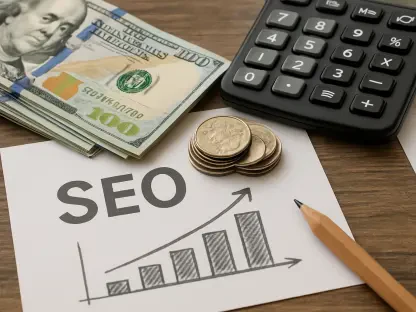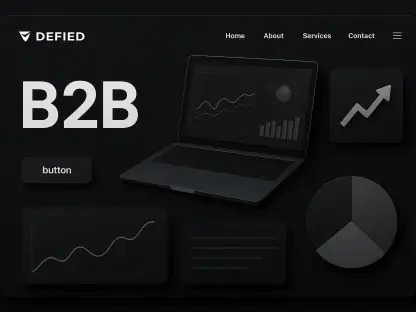Today, we’re thrilled to sit down with Anastasia Braitsik, a globally recognized leader in SEO, content marketing, and data analytics. With her finger on the pulse of digital publishing, Anastasia has witnessed the rise and fall of various online revenue models, including the once-dominant blogging-for-dollars approach. In this interview, we dive into the mechanics of this now-crumbling model, exploring why it thrived, what led to its decline, and how the ecosystem around it—think hosting providers, content platforms, and ad networks—is being forced to adapt. We’ll also unpack the impact of AI and shifting user behaviors, and discuss what publishers and SEOs need to do to stay ahead in this rapidly changing landscape. Let’s get started!
Can you paint a picture of what the blogging-for-dollars model was all about and how it functioned during its peak?
Absolutely. The blogging-for-dollars model was essentially a strategy where anyone could create a website, throw up some content—often pretty basic or even automated—and monetize it with ads. At its peak, roughly in the late 2000s to early 2010s, it was a goldmine. You’d get traffic through organic search, direct visits, or even by buying cheap traffic and redirecting it to ad-heavy pages. The goal wasn’t to build a brand or sell a product; it was purely to rack up pageviews and cash in on ad impressions. Niche sites, lifestyle blogs, and even big news outlets leaned on this heavily. It was a low-barrier way to make money, especially for hobbyists, domainers, and small-time publishers who could spin up dozens of sites with minimal effort.
What were the key factors that made this model so incredibly profitable back in the day?
The profitability came down to a perfect storm of high ad rates and easy traffic. Back then, ad networks like AdSense paid out big for clicks and impressions—think crazy numbers like $250 per click on certain keywords. Organic search was a goldmine because ranking was simpler; you could target long-tail keywords with thin content and still get traffic. Traffic arbitrage also played a huge role—buying cheap clicks from PPC or social ads and funneling users to pages with high-paying display ads. The tools were basic but effective: content spinners, auto-blogging plugins, and cheap templates made scaling effortless. It was all about volume, not quality, and the economics just worked.
Ad revenue was the backbone of this model, but it’s been declining for years. Can you explain what’s driving that drop?
Sure, ad revenue has been on a downward spiral for over a decade due to several shifts. First, CPMs and CPCs have tanked as ad networks got smarter about fraud and placement, and competition for clicks skyrocketed. Advertisers are also moving their budgets to video and social media platforms, where engagement is higher, leaving less for text-based blogs. Programmatic advertising, which once fueled these sites, doesn’t deliver the margins it used to. Plus, as sites overloaded pages with ads—think popups and autoplay videos—user experience suffered, and Google started penalizing that with lower rankings. It’s a vicious cycle: less traffic, lower ad rates, and shrinking returns.
How are AI tools reshaping the traffic landscape for these ad-driven blogs?
AI tools like ChatGPT and Bing Copilot are a game-changer, and not in a good way for traditional blogs. They’re designed to answer user questions directly, often pulling from multiple sources without sending people to the original site. Blogs that relied on long-tail queries—like how-to guides or product comparisons—are hit hardest because users don’t need to click through anymore. Even if a site is cited in an AI response, it’s not the same as getting a visitor; there’s no ad impression or chance to monetize. It’s a structural threat to the entire model, cutting off the traffic pipeline that these sites depended on.
User behavior has also evolved significantly. How have people’s expectations changed compared to a decade ago?
Users today are far less tolerant of poor experiences than they were ten years ago. Back then, you could get away with 1,500-word fluff pieces or pages crammed with ads because people had fewer options. Now, they expect fast, clean, useful content. If a site has too many popups or takes forever to load, they bounce. Google’s emphasis on helpful content has reinforced this—algorithms prioritize user-friendly, valuable pages. Plus, with AI delivering instant answers, there’s even less patience for wading through filler. People want solutions, not noise, and that’s reshaped the game entirely.
This model didn’t just impact bloggers; it supported a broader ecosystem. How did hosting companies get wrapped up in this boom and bust?
Hosting companies were huge beneficiaries during the blogging boom. The demand for cheap, scalable infrastructure exploded as millions of niche sites and ad-driven blogs popped up. Providers could offer rock-bottom prices—sometimes as low as a dollar a month—because they made money on sheer volume. But as this model collapses, that casual, high-churn customer base is drying up. Now, hosting companies face a pivot to serving more serious clients like ecommerce businesses or brands who demand reliability and performance over cheap plans. The days of explosive growth from hobbyist bloggers are over, and providers need to adapt to a smaller, more discerning market.
Content management systems like WordPress were also tied to this model. How are they and their surrounding businesses being affected by the downturn?
WordPress itself, being open-source, isn’t going anywhere, but the ecosystem around it—theme developers, plugin shops, and agencies—is feeling the squeeze. These businesses thrived on the volume of bloggers and hobbyists who needed quick, easy solutions to spin up ad sites. With that demand flattening, the focus is shifting to stability over novelty. The next wave of WordPress users, like ecommerce operators and freelancers, care more about reliability—sites that don’t crash or need constant updates. The steep growth curve these businesses enjoyed for years is leveling off, and they’ll need to cater to users with real revenue models, not just pageview chasers.
Looking ahead, what’s your forecast for the future of digital publishing and SEO in light of these seismic shifts?
I think the future of digital publishing and SEO belongs to those who prioritize value over volume. The days of low-effort, ad-stuffed sites are done—AI and user expectations have raised the bar too high. Publishers need to focus on deep, credible content that gets surfaced in AI summaries or builds entity-level authority through strong branding and authorship. Diversifying revenue beyond ads—think affiliates, premium content, or digital products—will be critical. For SEO, it’s about designing pages as answer sources with clean formatting and front-loaded insights. The ones who survive will build something worth reading and referencing, not just something that ranks. It’s a tougher landscape, but it’s also a chance to create more meaningful, sustainable businesses.









